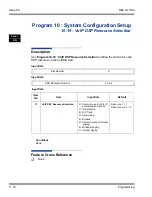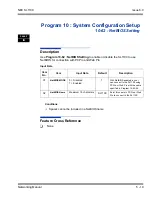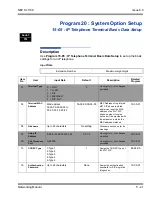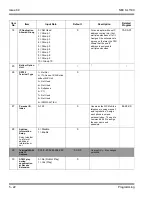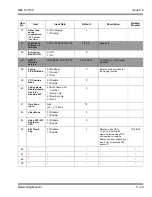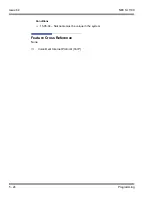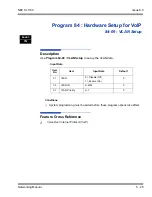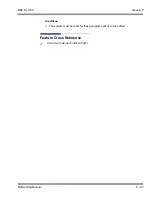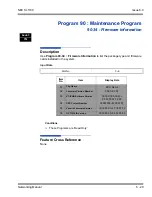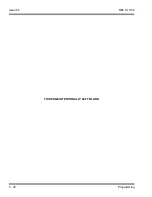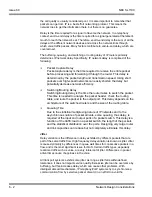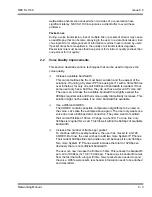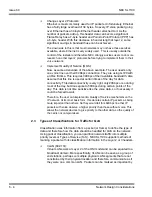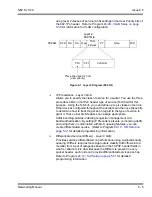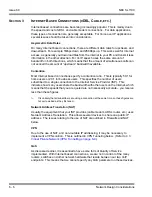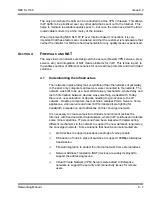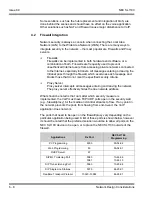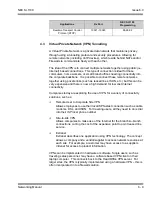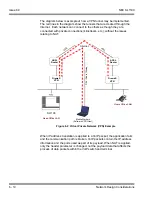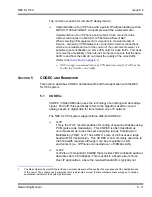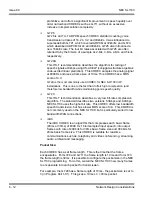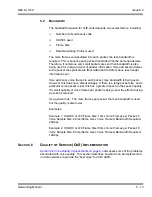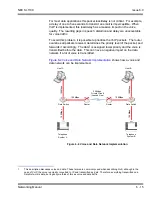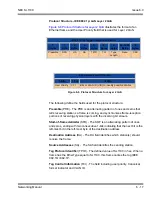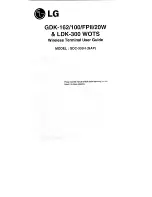
Issue 6.0
NEC SL1100
6 - 2
Network Design Considerations
the call quality is usually considered poor. It is also important to remember that
packets can get lost. IP is a best effort networking protocol. This means the
network tries to get the information there, but there is no guarantee.
Delay is the time required for a signal to traverse the network. In a telephony
context, end-to-end delay is the time required for a signal generated at the talker's
mouth to reach the listener's ear. Therefore, end-to-end delay is the sum of all the
delays at the different network devices and across the network links through
which voice traffic passes. Many factors contribute to end-to-end delay, which are
covered next.
The buffering, queuing, and switching or routing delay of IP routers primarily
determines IP network delay. Specifically, IP network delay is comprised of the
following:
Packet Capture Delay
Packet capture delay is the time required to receive the entire packet
before processing and forwarding it through the router. This delay is
determined by the packet length and transmission speed. Using short
packets over high-speed networks can easily shorten the delay but
potentially decrease network efficiency.
Switching/Routing Delay
Switching/routing delay is the time the router takes to switch the packet.
This time is needed to analyze the packet header, check the routing
table, and route the packet to the output port. This delay depends on the
architecture of the switches/routers and the size of the routing table.
Queuing Time
Due to the statistical multiplexing nature of IP networks and to the
asynchronous nature of packet arrivals, some queuing, thus delay, is
required at the input and output ports of a packet switch. This delay is a
function of the traffic load on a packet switch, the length of the packets
and the statistical distribution over the ports. Designing very large router
and link capacities can reduce but not completely eliminate this delay.
Jitter
Delay variation is the difference in delay exhibited by different packets that are
part of the same traffic flow. High frequency delay variation is known as jitter. Jitter
is caused primarily by differences in queue wait times for consecutive packets in a
flow, and is the most significant issue for QoS. Certain traffic types, especially
real-time traffic such as voice, are very intolerant of jitter. Differences in packet
arrival times cause choppiness in the voice.
All transport systems exhibit some jitter. As long as jitter falls within defined
tolerances, it does not impact service quality. Excessive jitter can be overcome by
buffering, but this increases delay, which can cause other problems. With
intelligent discard mechanisms, IP telephony/VoIP systems try to synchronize a
communication flow by selective packet discard, in an effort to avoid the
Содержание SL1100
Страница 1: ...Networking Manual NDA 31190 Issue 6 0 SL1100...
Страница 2: ......
Страница 4: ......
Страница 22: ...Issue 6 0 NEC SL1100 1 2 Introduction THIS PAGE INTENTIONALLY LEFT BLANK...
Страница 62: ...Issue 6 0 NEC SL1100 5 30 Programming THIS PAGE INTENTIONALLY LEFT BLANK...
Страница 81: ...NEC SL1100 Issue 6 0 Networking Manual 6 19 Ethernet Frame Example Layer 2 QoS Enabled Continued...
Страница 94: ...Issue 6 0 NEC SL1100 6 32 Network Design Considerations THIS PAGE INTENTIONALLY LEFT BLANK...
Страница 134: ...Issue 6 0 NEC SL1100 8 10 DHCP Client THIS PAGE INTENTIONALLY LEFT BLANK...
Страница 159: ...NEC SL1100 Issue 6 0 Networking Manual 9 25 Figure 9 7 Log In to IP Phone...
Страница 181: ...NEC SL1100 Issue 6 0 Networking Manual 9 47 Figure 9 25 IP System Operation Setup...
Страница 206: ...Issue 6 0 NEC SL1100 9 72 IP Multiline Station SIP Figure 9 36 NAPT Configuration Example...
Страница 230: ...Issue 6 0 NEC SL1100 10 18 IP Single Line Telephone THIS PAGE INTENTIONALLY LEFT BLANK...
Страница 232: ...Issue 6 0 NEC SL1100 11 2 NAPT Figure 11 1 NAPT Configuration Example...
Страница 242: ...Issue 6 0 NEC SL1100 12 4 All DSP Busy Indication THIS PAGE INTENTIONALLY LEFT BLANK...
Страница 290: ...Issue 6 0 NEC SL1100 13 48 SL Net THIS PAGE INTENTIONALLY LEFT BLANK...
Страница 291: ......
Страница 292: ...SL1100 Networking Manual NEC Corporation of America Issue 6 0...

